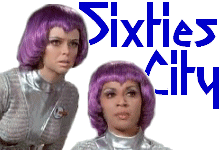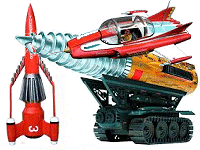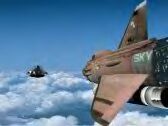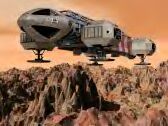| |
|
1966
/ 1967 Original Novels
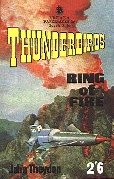 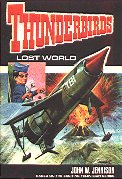  
8 original
novels authorised
4 by Armada in paperback and 4 by World Distributors in hardback
Paperback - all by John Theydon
'Thunderbirds'
'Calling Thunderbirds'
'Thunderbirds: Ring of Fire'
'Lady Penelope: The Albanian Affair'
Hardback -
Two Authors
'Thunderbirds: Operation Asteroids' by John W.Jennison
'Thunderbirds: Lost World' by John W.Jennison
'Lady Penelope: Cool For Danger' by Kevin McGarry
'Lady Penelope: A Gallery Of Thieves' by Kevin McGarry

1967 - Captain Scarlet and The Mysterons
A Gerry Anderson
Production
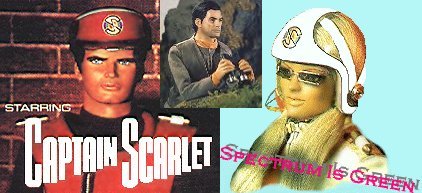
|
32 episodes
made in two blocks - 12 in 1967 and 20 in 1968
First
transmitted: 1st October 1967
Format
by Gerry and Sylvia Anderson
Executive Producer: Gerry Anderson
Produced
by Reg Hill
The
Mars landing by Spectrum, Earth's security organisation,
in 2068, ended in the destruction of the Mysteron city.
Mistakenly believing themselves to be the victims of
an unprovoked attack, the Mysterons swore revenge and
during their retaliation attacks, two Spectrum agents,
Captains Scarlet and Black, are killed and duplicated
with the power to recreate themselves even after death.
Captain Black becomes an agent for the Mysterons, while
Captain Scarlet remains loyal to Spectrum and leads
the fight to protect Earth and Skybase from the revenge
of the Mysterons and their strange reconstructive powers.
Despite
the lyrics of the 'Spectrum' song, it was never the
Mysterons' intention to conquer the Earth.
|

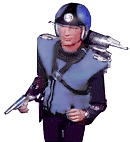
|
First
use of properly proportioned puppets and the first series to use
the Century 21 dart before the main title sequences. Notable for
the eerie opening scenes, the main theme tune played by The
Spectrum ( who never appeared as a group although they released
a single entitled 'Samantha is mine' ) and the 7 note segue used
during the 'strobe-shot' scene changes. Each episode had a two
week shooting schedule but, for the first 12 episodes, pairs of
episodes were shot simultaneously over a period of 12 weeks. The
remaining 20 episodes were shot back-to-back with the film 'Thunderbird
6' over a five month period.
See also Bill Harry's 'Captain
Scarlet' page

1967 - 1969 Candy
and Andy
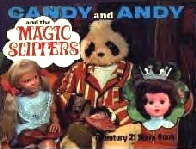    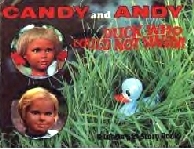
A series of photo
stories about two children that live with Mr and Mrs Bearanda
who are Pandas.
The storyline was intended as a TV series but did not make the
screen.
The characters were first seen in a magazine called 'Candy' published
by City Magazines Ltd in co-operation with Century 21 publishing
and edited by Alan Fennel.
Issue 1 appeared on 21st January 1967 and ran to issue 154 on
27th Dec 1969.
Annuals were produced from 1967 to 1969. Story titles included:
Good Deed Day, Rufus To The Rescue, The Magic Slippers, Penny
For The Guy and The Duck Who Could Not Swim.

1967 - Thunderbird
6
Century 21 Cinema / United Artists

Film - 90 mins Premiere:
29th July 1968 at the Odeon Cinema, London
Executive Producer:
Gerry Anderson
Associate Producer:
John Read Producer: Sylvia Anderson

A
second crack at the big screen for International Rescue. This
time, featuring Lady Penelope aboard the maiden voyage of Brains'
new airship - 'Skyship One'. It doesn't take long for Lady P to
discover that the crew are imposters, involved in a plot to bring
about the downfall of International Rescue.
Thunderbird
'6' is, in fact, the biplane in the film. The real life pilot
had to appear in court on charges of dangerous flying after filming
the sequence of flying under a motorway bridge on the then new,
unopened, M40 motorway at Lane End near High Wycombe.
The charges were dropped!

1968 - Doppelganger (Journey To The Far Side of
the Sun)
Century 21 Cinema
/ Universal
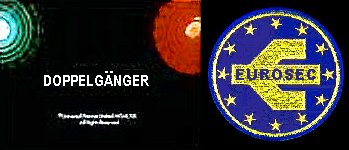
Film - 101 minutes Premiere:October
8th 1969 at the Odeon Cinema, London
(June 1969 - U.S.A.)
Produced by
Gerry and Sylvia Anderson Associate Producer:
Ernest Holding
Following
the discovery of a new planet on the opposite side of the sun,
EUROSEC, the European Space Exploration Centre, send a 2-man probe
to investigate. The probe crashes, but it takes the crew a while
to realise that it has crashed on a mirror-image duplicate of
Earth.
Doppelganger
was retitled 'Journey To The Far Side Of The Sun' for American and
Australian audiences. British and European releases retained the
Doppelganger title, which is the name under which the film is catalogued
by the BFI and the BBFC. It won the 1969 Hollywood Blue Ribbon Award
for best screenplay and was nominated for an academy award for best
special effects. Strangely, only the American version has been seen
on British TV. John Read left the company during production.

1968 - Joe 90
A Gerry Anderson
Production

30 episodes First
transmitted: 5th October 1968
Format by Gerry and
Sylvia Anderson
Executive Producer: Reg Hill Producer: David
Lane
Directed
by: Peter Anderson : Leo Eaton : Alan Perry : Ken Turner : Desmond
Saunders
Nine
year old Joe McClaine can acquire the brain patterns and, therefore,
the abilities of anyone, using B.I.G.R.A.T. ( Brain Impulse Galvanoscope
Record And Transfer ), an invention of his adopted father. The
ability is activated whenever he dons his special electronic glassesand
is put to good and frequent use by W.I.N. - the World Intelligence
Network.
Politics
were important at the height of the 'Cold War' - even in children's
series - so, despite the plot of Joe 90's first episode featuring
British agent Joe stealing a Russian fighter plane to restore
the balance of power,there is an explanation at the end of the
episode that there is no conflict between Soviet Russia and the
West. This
was the first time a woman wasn't used to do the voice of a boy.
A real kid - Len Jones - was used, making the character sound
much more realistic.
Production
started at MGM studios, Borehamwood but halted during the 17th
episode when the studio closed due to a switch to shows containing
more live action.. Shooting restarted six months later at Pinewood.
While the puppet stages closed down and the puppetry staff were
made redundant in January 1969, the Century 21 Studios at Stirling
Road continued to operate until late in 1970, as all the stages
were given over to the filming of special effects for UFO. Merchandising
companies set up around the puppet series were wound up as was
the Century 21 record company. The last issue of TV21 under Century
21 ownership came out on 6th Sept 1969.

1967 - 1969 - Project
S.W.O.R.D
TV21 Comic story
series and Annual

TV21 attempted to produce a 'harder' type of science fiction with
a series of text stories which were also designed to help promote
a range of futuristic toys that Century 21 Merchandising had acquired
from a manufacturer in Hong Kong which they marketed under the name
Project SWORD. Although not based on Anderson's creations, they
did feature in two series of comic strips and text stories published
by Century 21 Publications. The only actual Anderson craft included
in the line was Zero-X, the spacecraft which first appeared in the
film Thunderbirds are GO!. The ambitious format might have made
for a dramatic science-fiction series, even with puppets, had it
ever appeared on television. Keith Shackleton, the head of Century
21 Merchandising, apparently tried to persuade Gerry Anderson to
do a series about Project SWORD, but the concept of Earth on the
brink of destruction was considered to be too dark a subject for
the Anderson production style. The text stories are credited to
TV21 script editor Angus Allan and illustrations, one per story,
were the work of Ron Embleton, Don Lawrence, Mike Noble, Jon Davis
and Malcolm Stokes, who also did the majority of the 1968 annual.

1969 - Secret Service
A Gerry Anderson
Production
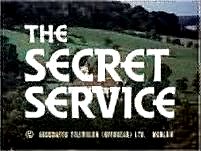
13
episodes First transmitted: 21st September 1969
Format
by Gerry and Sylvia Anderson Executive Producer:
Reg Hill
Set
in the present day, Father Stanley Unwin and his gardener Matthew
Harding are secret agents for B.I.S.H.O.P., a department of British
intelligence. They use a device called a minimiser which can reduce
any object in size - even people.
The
Secret Service was not the first of Gerry Anderson's series to
be set in the present day. Supercar was also set in the present
day. The first season episode 'A Little Art' indicates that the
date is around 1960 while the second season episode 'The Day That
Time Stood Still' is specifically set in 1962. This was the first
series to use puppetry mixed with live action sequences.The
Secret Service presented a strange mixture of live action and
puppets. Real human beings and objects were used in long shots
while puppets and models were filmed in close-up. The bizarre
filming techniques were not liked by ITC boss Lew Grade and production
of The Secret Service cancelled after only 13 episodes. The experience
gained in live action and miniature photography was, however,
used more successfully in Anderson's next series.

1970 - U.F.O.
A Gerry Anderson
production with ATV for ITC worldwide distribution

26 episodes First transmitted: 18th September 1970 First transmitted: 18th September 1970
Producer: Reg
Hill Executive Producer: Gerry Anderson Executive Producer: Gerry Anderson
Set
in the, then, near future in 1980, S.H.A.D.O., Supreme Headquarters
Alien Defence Organisation, was set up to protect Earth from attack
by aliens trying to obtain human organs for transplant. Conveniently
based underneath the Harlington-Straker film studio, both run
by Ed Straker, S.H.A.D.O. also operated a moonbase and the mobile
underwater vehicle Skydiver.
This
series was mostly live action with models used for the futuristic
vehicles, except for the road cars, which were actual vehicles.
UFO starred twelve actors from the film Doppelganger, seven making
regular appearances, plus the dancer Peter Gordeno and Gabrielle
Drake as Lt. Gay Ellis. When syndicated in America it topped the
New York and L.A. ratings for 17 consecutive weeks. This was the
last production for Century 21, Gerry Anderson setting up the
Group Three company after this as the contract with Lord Lew Grade
had expired.
See also Sixties
City UFO page and Bill Harry's Sixties: Gabrielle
Drake

1972 - The Protectors
A Gerry Anderson
/ Group Three production in association with ATV for ITC worldwide
distribution

52 episodes x 25 mins First
transmitted: 29th September 1972
Created by Lord
Lew Grade
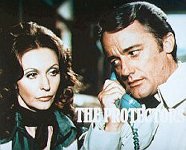
Harry
Rule (Robert Vaughn), Paul Buchet (Tony Anholt) and the Contessa
Caroline Ogilvie Di Contini
(played by the late, wonderful actress Nyree Dawn Porter) are one
team in the Protector organisation that acts outside the law to
bring criminals to justice.
This
was the first Group Three production.
The
powerful theme song, 'Avenues and Alleyways' by Mitch Murray and
Peter Callender was a chart success for Tony Christie.
The memorable five note segue by Mitch Murray in the song was also
used consistently throughout the incidental music which was composed
by John Cameron.

Mitch Murray
Songwriter who wrote and co-wrote many hits and Number Ones in the
60s and Seventies

1972 - The Investigator
Starkits
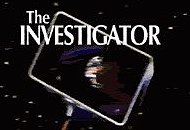
1 pilot episode x
25 mins Produced by Gerry Anderson
A
heard, but unseen being from another galaxy enlists the help of
two children, John and Julie, to help him in his crusade against
crime and injustice on Earth.
In this case, to prevent the theft of a relic from a Maltese church.
Not
transmitted. As in Secret Service, the miniaturisation of people
once again plays a major part in the special effects and storyline.

1975 - Space 1999
A Gerry Anderson
/ Group Three production for ITC worldwide distribution

48 x 50 min episodes
in two seasons of 24 First transmitted: Thursday
4th September 1975
Created by Gerry
and Sylvia Anderson Executive Producer: Gerry
Anderson
Producer: season
1: Sylvia Anderson Producer: season 2: Fred Freiberger
Set
in the 1990's and the moon has been blasted out of orbit by the
accidental explosion of a radioactive waste dump, along with moonbase
Alpha and its 300 inhabitants commanded by John Koenig. This is
the story of its travels and the Alphans' search for a new home.
Martin
Landau and Barbara Bain star in this tale of human survival. Barry
Morse left after the first season and was replaced by a second
female lead - Maya, a metamorph from the planet Psychon - played
by Catherine Schell. Work had already started on a second series
of U.F.O. but as it was not taken up by America, production quickly
changed to Space 1999. The company moved to the old Hammer site
at Bray studios for the special effects work. To make the space
vehicles fly more smoothly a technique was evolved where the cameras
were moved instead of the model, the background being superimposed
afterwards.


See
the superb quality EAGLE II pictures at space1999eagle.com
1975 - The Day After Tomorrow - Into Infinity
A Gerry Anderson
/ Group Three production for the NBC network

1 episode x 52 mins
First transmission U.S.A. 9th December 1975 / U.K. 11th December
1976
Produced by
Gerry Anderson Prodn. Supervisor: F.Sherwin Green
Directed by Charles Cricton
The
lightship Altares which can travel at near lightspeed using a
photon drive carries two families, the Masters and the Bowens,
to Alpha Centauri on an exploration mission. After being struck
by a meteor shower, the ship passes through a black hole into
a new universe.
Starring Brian Blessed, Joanna Dunham and Nick Tate, and narrated
by Ed Bishop. This production was made in 10 days during July
1975 at Pinewood and Bray studios using the cast and crew of Space
1999 between the first and second series. The special effects
took a further 6 weeks. Having the appearance of a pilot episode
it is, in fact, one of a series of seven educational programmes
commissioned by NBC, each dealing with a different subject. This
one was meant to encompass Einstein's theory of relativity. Never
made into a series, it has been seen only once on U.K. television.

c.1976 - Intergalactic Rescue: RescueFour
Conceived by Gerry
Anderson and Fred Freiberger
Proposed: 13 x
30 minute episodes
This
was a proposed live-action version of Thunderbirds originally titled
'RESCUE 4'. It was centred around an all-purpose rescue vehicle
patrolling a distant sector of space.
Presented to NBC as a 13 x 30 minute series, the option of a pilot
was not taken up.

c.1977 - Starcruiser
Created by Gerry Anderson
and Fred Freiberger
Planned: 13
x 30 minute episodes - not taken up - no pilot
Although
never making it to the screen, the concept eventually materialised
in the form
of a comic strip in the childrens TV magazine 'Look-In'

c.1977 - Ericsson Promo

A
promotional film for the Swedish telecomms giant Ericsson was
scripted by Gerry Anderson

1977
- Alien Attack
 A
Gerry Anderson-produced cinema commercial, made to promote Jif Dessert
Toppings, used Supermarionation technology
A
Gerry Anderson-produced cinema commercial, made to promote Jif Dessert
Toppings, used Supermarionation technology
and was scheduled to run before the main showing of the film Star
Wars
|
|
|
